
Canning is an essential skill for preparedness and survival. You can save money and store food that will last a long time. When faced with any SHTF scenario, you can rest assured that you will have plenty to eat as long as you plan ahead.
We have already covered the basics of canning and the two most common methods. The materials needed for canning has also been discussed in a previous post.
Learning how to can might be a learning curve, but if you have the determination to get involved in this self-sufficiency skill, you will get the hang of it in no time. All you need to do is consider the benefits of canning to realize that the time you put in is worth it.
Here are some tips to make canning easier, or that will let you take your skills to the next level.
1. Get a good canning book.
Well-Preserved: Recipes and Techniques for Putting Up Small Batches of Seasonal Foods by Eugenia Bone is the book for gourmand canners who care more about stocking your pantry with variety than quantity and for urban canners who think it’s cool to have a larder in Soho.
Put ‘Em Up! A Comprehensive Home Preserving Guide for the Creative Cook by Sherri Brooks Vinton is an inspiring resource for new canners and for folks who like to have pretty pictures along with exceptionally interesting recipes.
The Big Book of Preserving the Harvest: 150 Recipes for Freezing, Canning, Drying, and Pickling Fruits and Vegetables by Carol W. Costenbader is for you if you’re looking for a comprehensive canning guide with straightforward, easy-to-understand instructions.
The Joy of Pickling: 250 Flavor-Packed Recipes for All Kinds of Produce from Garden or Market by Linda Ziedrich will delight anyone who loves exploring history and culinary traditions. Of course, pickle love is a must!
To read the full article click here.
2. From Start to Finish – Canning Should be Organized.

Every prepper knows that organizing materials is very important in canning. Via thegreenestdollar.com.
It’s important to stay focused during the canning process, to properly monitor the progress and not to forget an important step. Time is of the essence when it comes to canning. The object is to get the food processed as quickly as possible, from preparation to sealing, to reduce the risk of food deterioration which could affect the finished product. Keep your guidelines handy for quick reviewing and be prepared to stay the course and finish the process. See more.
3. Pectin is a Great Canning Ingredient.

Pectin can save time in canning giving you opportunities to prepare other things. Via Simply Living Simply.
According to Allrecipes.com, pectin–an essential gelling agent–is found naturally in many fruits, such as apples, plums, and oranges. Most recipes call for added pectin, in either liquid or powdered form; there are also special pectins available for making low-sugar preserves. Jams and jellies made without pectin must be cooked longer, depending upon the amount of natural pectin in the fruit.
When making jams and jellies, make sure to use the proper ratio of sugar, acid, and pectin to achieve the right texture and flavor.
4. Botulism in Home Canned Food: Less Common Than You Think.
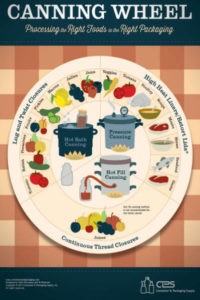
Preppers can avoid health risks by using the right food for the right packaging. Via containerandpackaging.com
Botulism is a serious foodborne illness, but it is also exceedingly rare. Like shark attacks and plane crashes, the fear of botulism generates exaggerated anxiety that is out of step with the actual risk. It may be calming to know that botulism is caused by improperly canned low-acid foods, such as fish, legumes, and vegetables. Acidity is the silver bullet against the bacteria that causes botulism, so high-acid foods—such as most fruit-based sweet preserves, vinegar pickles, and fermented vegetables—are safe from botulism risk. Berkeley jam guru June Taylor says the only way you could hurt a person with a jar of jam is if you hit him in the head with it.
Click here to learn more.
5. Let the Canner Make the Syrup.
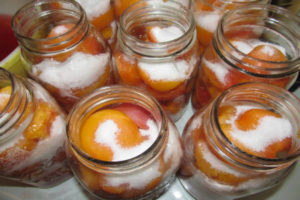
Canning without syrup is possible if a prepper knows what is needed. Via Foodstorageandsurvival.com.
When you’re canning fruit, most methods require that you mix up a light to heavy syrup to add to the jars of fruit prior to canning. This entails measuring sugar into water in a pot and heating it all up, hoping you didn’t make way too much or not enough, and dripping sugar-water everywhere while you’re filling your jars. Why not make your job less sticky and have the perfect amount of syrup for your peaches, pears, cherries, and more by letting the canner make the syrup?
Read more here.
6. Prep Tip: Check the pressure canner seals while you are getting it ready.
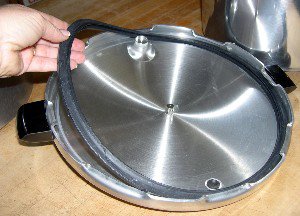
Preppers know how to avoid accidents and canning failure by checking everything. Via simplycanning.com.
mrswages.com: If your pressure canner has any gaskets or seals that are dried out or cracked, replace them. This will help your canner hold pressure while you are processing the foods. Also, the pressure saucepans are not meant to be canners and all recommendations are that you not use them as such.
7. A pressure canner can save water time and energy.
Use your pressure canner to can applesauce, apple pie filling and tomatoes, even though they can be water bath canned, using the pressure canner on 5lbs. of pressure greatly reduces time and energy when canning these foods. Plus, it saves on water used, a plus in droughts or preparedness times when water is scarce. Click here to see more money-saving tips on pressure canning.
8. Canning Chili, Stews or Soup? Go Easy On The Seasonings.
(For Canning Homemade Soups, Stews, and Chili)
Herbs and spices will strengthen over time, so go easy on them when canning. Especially spicy stuff. It is recommended that you avoid Sage altogether, as it turns bitter during canning. You might want to just add the seasonings to the dish as you’re re-heating it before serving.
9. Green Bean Canning Tip: Adding ingredients like ham or bacon to green beans is not safe.
Can the green beans adding only Mrs. Wages Canning salt if you add anything. Green beans may be packed either raw or hot. Either way, pack the beans tightly into the jars and add salt as desired. Fill the jar to within 1-inch with boiling water and remove air bubbles. Wipe off the jar rims and process at 11 pounds in a dial gauge canner or 10 pounds in a weighted gauge canner 20 minutes for pints and 25 minutes for quarts. Read more.
10. Canning Newbies: Start with small batches.
According to takepart.com,
If you’re just getting started, work in small batches—just two or three pounds of fruit or vegetables at a time. A small batch is easier to manage, quicker to make, and more economical. And if the recipe doesn’t work (which is unlikely), there’s less heartbreak involved in a small failure. Besides, how much strawberry jam or corn relish can anyone use? You’re not stocking a bomb shelter.
11. Skip the pasta and rice when canning soups, stews and chili.
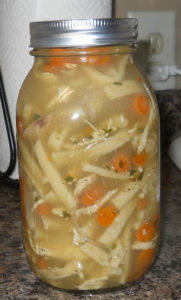
Canning food is a great way for preppers to stock up on food for when SHTF. Via noregretsliving.wordpress.com.
For soups, stews and chili:
Or at least put in very little when making stuff like chicken noodle soup. Also, you don’t want to cook noodles or rice before processing them in the canner, or they’ll turn to mush. Instead, make your soup base, fill your jars, then add a tiny bit of raw noodles or rice, then proceed with canning. Better yet, just leave them out and add them to the soup as you re-heat it. The problem with adding too many noodles is that the soup can get very thick in the center of the jar, which won’t get heated adequately during the canning process. You risk food poisoning, even botulism, if you haven’t heated the contents of the jar well enough. If you absolutely have to add the pasta, go easy on it. More tips from the source.
12. Yes, the family can can!
Melissa K Norris says, Enlist the help of children and family, even small kids. Explain why you need help and how this food will help feed them throughout the winter months and money. It creates a family bond and sense of accomplishment with the children. We snap our beans together as a family and makes the workload less on me. Kids feel a sense of ownership when they help grow and prepare the food themselves and don’t fuss when it comes to eating their veggies.
13. Three F’s in Canning: Freeze Fish First.
If you want to can smoked salmon, freeze the fish first. Frozen fish accepts the brine better than fresh. See more.
Here’s a nicely and thoughtfully done video on canning fish from a fellow prepper.
14. Safety Tip: Don’t leave jars of food in the canner overnight.
If you live at a higher altitude, charts for adjusting the pressure are available in canning books or from your local Extension Office.
Remember, the only SAFE way to process low-acid foods (which are all vegetables, meats, and vegetable mixtures) is by using a pressure canner. This is because of c. botulinum toxin, which is present in low acid foods. C. Botulinum is only destroyed at temperatures above 212°F. which can only be achieved in a pressure canner. Now I know some of you will say your oven reaches temperatures higher than this BUT the oven does not remove air from the jars, which is necessary to prevent botulism toxin from growing. Pressure does this.
Any way you look at it, you cannot safely can corn, green beans, or any other vegetable without a pressure canner. Period. Other methods are very risky and can result in botulism poisoning which attacks the central nervous system and can cause death. Read the full post.
15. More canning tips in this video
http://survivallife.com/2014/11/07/canning-tips-for-preppers/
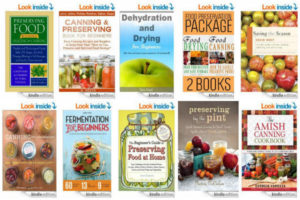
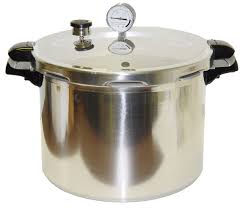


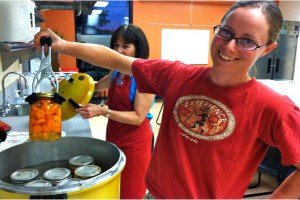

No comments:
Post a Comment
Note: Only a member of this blog may post a comment.